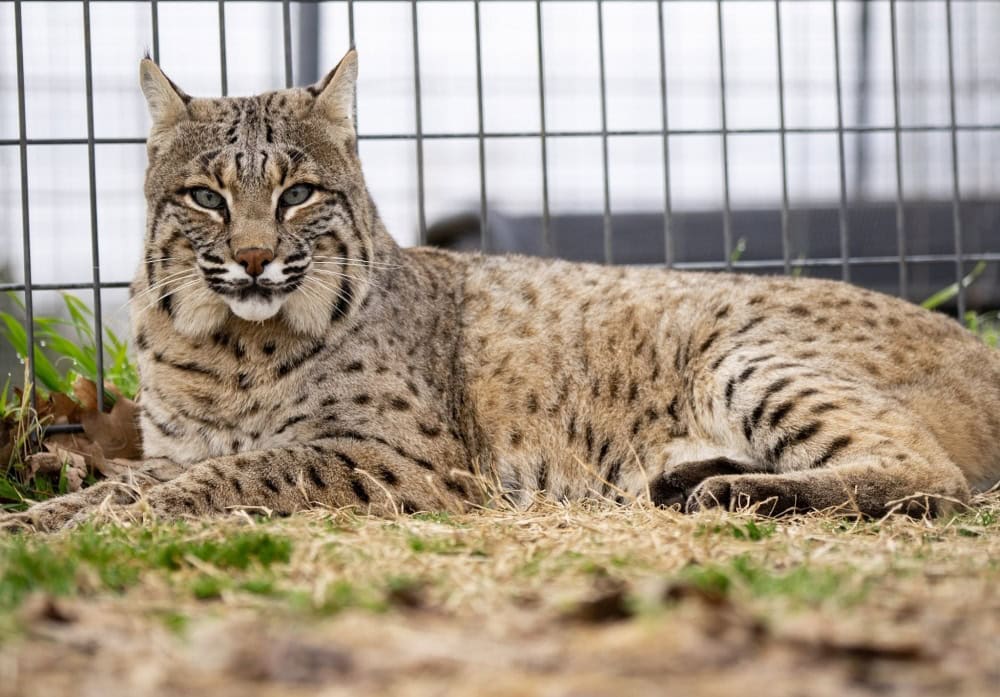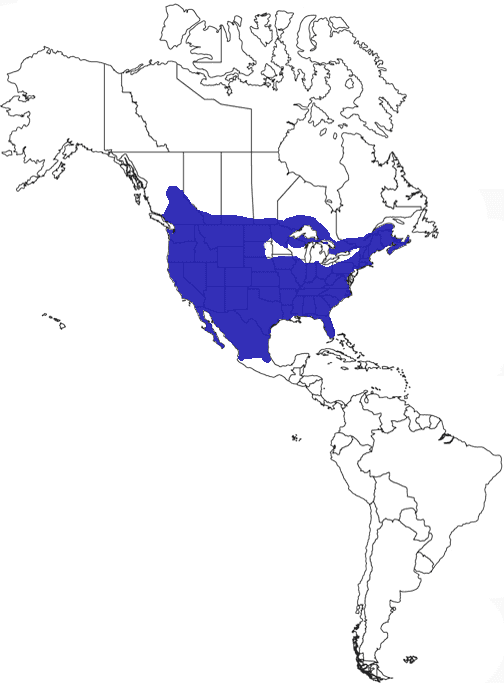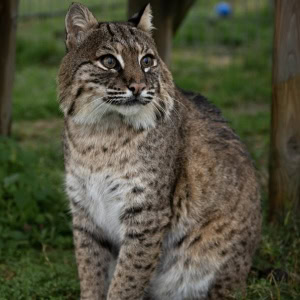
Taxonomy
Kingdom: Animalia
Phylum: Chordata
Class: Mammalia
Order: Carnivora
Family: Felidae
Subfamily: Felinae
Genus: Lynx
Species: rufus
Scientific Name: Lynx rufus
IUCN Red List of Threatened Species Status: Least Concern
About
Habitat: Bobcats are considered one of the most widely spread and adaptable carnivores in North America. They can be found in a wide variety of habitats such as boreal coniferous, mixed forest, bottomland hardwood forest, coastal swamp, desert, and scrubland. While bobcats are generally adaptable, they do have a preference for areas with little human development, dense vegetation cover, and high populations of rabbits and rodents.

Territoriality: Bobcats are territorial, solitary felines. Male territories, roughly 25 to 30 square miles, tend to overlap, but female territories, about 5 square miles, do not. These territorial boundaries are maintained with scent marking.
Lifespan
In the Wild: Up to 15 years
In Captivity: Up to 32 years
Population
Estimated 3 million individuals in the U.S.
Physical Description
Weight: 11-30 pounds
Length: 26-41 inches
Bobcats are a medium-sized cat, approximately two times the size of a housecat, named for their short, black-tipped bobbed tail. They can have a range of coat colors, brown-gray to red-brown, depending on the region they are found. Varying with each individual, dark brown or black spots, and lined markings can be seen along the body, as well as a lighter-toned ventral side. Bobcats also have white “eye spots” on the back of their ears. When compared to their cousin, the lynx, they are smaller in size with little to no tufts of fur on the tips of their ears.

History
The mid-1800s saw a sharp increase in the human population and expansion due to increased European settlement. This settlement led to massive deforestation, agricultural advancements, and urban expansion. This growth was also paired with economic development, more specifically, the fur industry. With bobcats being one of the most populous wild cats in the United States, they were nearly extirpated, or regionally extinct, from the vast majority of the country because of the high economic value of their pelts. However, in the late 1990s, enforced management laws and programs prevented the complete eradication of bobcats. Because of this, populations began to increase to the growing numbers of today.
Reproduction
Gestation Period: 50-70 days
Litter Size: 1-6 kittens (2-3 average)
Female bobcats reach sexual maturity around one or two years of age, but they will typically not become pregnant in their first estrus. Breeding season for bobcats will generally be from December until April but is dependent entirely on female interest. If a female is not impregnated in late winter, she may mate and have a litter between August and September. Because bobcats are solitary, breeding is the only time they will interact. Once the female gives birth, she will raise the kittens on her own until they are approximately eight months old. A female may give birth to multiple litters in a year, but the kittens from both litters will usually stay with her through their first winter.
Diet and Hunting Behaviors
Bobcats are small carnivores that are well adapted to a wide variety of prey. They are preferential to lagomorphs, or rabbits, but they also tend to switch prey seasonally. Generally, they hunt small mammals like rabbits, squirrels, chipmunks, and voles. But, they are powerful, agile predators that are capable of taking larger game, including young ungulates. Bobcats are ambush predators and will stalk their prey until they are close enough to strike. Once they are close enough, they can jump nearly 10 feet onto their prey to deliver a fatal blow, usually a bite to the neck. If necessary, they can run up to 30 miles an hour or climb trees to chase down their quarry.
Threats
Because bobcats exist all over North America, they face a wide variety of threats depending on the region in which they are found. The majority of bobcat populations are disposed to habitat destruction, human-bobcat conflict, and international demand for bobcat fur.
Increased urbanization has caused ideal bobcat habitat to become scarce in profoundly human-populated areas. While bobcats are typically reclusive, they are very adaptable and have been known to den and thrive in human developed areas. But, in these close quarters, they are more likely to become habituated and potentially attack humans or their domesticated animals, like pets or even livestock. This unwanted interaction can cause human-wildlife conflict that often leads to bobcats being labeled as pests and, ultimately, their extermination. There is also the risk of high mortality rates due to the exposure to common rodent poisons used in urban areas.
Finally, the international fur trade has a direct impact on bobcat populations. Bobcats are the only spotted felid that is not illegal to trap and then sell. The fur industry in the U.S. has dropped within the last decade due to increased public awareness of animal welfare. But, in Europe, Russia, and China, a bobcat pelt can be sold for up to $150,000. The main issue with this trapping is the methods being used. Steel-jaw traps are the most common trapping device, a technique that is outlawed in over 80 countries across the world for being so hazardous and inhumane.
While adult bobcats are usually uncommon prey for raptors and larger mammal carnivores, younger bobcats can easily fall victim to these other predators.
Bobcats might be facing a vast majority of threats across North America, but many state management agencies have completed surveys showing bobcat populations in the United States are stable or increasing in all states, except Florida.
For a more in-depth look at threats to bobcat populations and how you can help, check out The Importance of Bobcats.
Bobcat Safety
- Feed domesticated animals indoors, or clean up after their meals. Accessible food sources attract wild animals and are easily prevented.
- Do not keep domestic animals outside, especially at night. Enclose any poultry in a night house as they are are prey for wild animals.
- If you have any issues with bobcats or other wild animals, contact your local wildlife authorities for help.